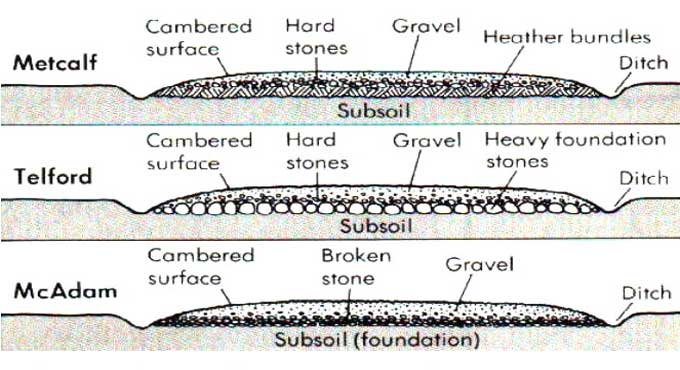
What you need to know about Telford Road Construction
There has been a tremendous progress in road construction since ancient times. Today, roads are made out of a variety of materials including asphalt, concrete, and even plastic. This has allowed for roads to be built in a much faster and more efficient manner. In addition, modern roads are much safer than their predecessors, thanks to the use of guardrails, improved drainage systems, and increased visibility.
Road construction is an activity that has been around for centuries and has changed dramatically over time. From dirt and gravel roads to modern roads made out of asphalt, concrete, and even plastic, road construction has come a long way in a relatively short amount of time.
Telford Construction History
Early in the 19th century, Thomas Telford founded the London institution of civil engineers. The foundation stones should be varied in thickness to create a definite cross slope for the top surface of the pavement, and he used a heavy foundation above the soil subgrade to keep the road foundation formed. Cross drains were usually laid below the foundation level at an interval of almost 90 meters.
Telford Road Construction Features
The road foundation was constructed with stones ranging in size from 17 to 22 centimeters. In the central area and on the sides, angular broken stones were used along with lime mortar and 7 cm size broken stones.
It was generally constructed with a slope of 1:15 and a thickness of 4 cm. A system of cross drains was provided at almost 90m intervals, usually below the foundation level.
Telford Road Construction Process
During the late 18th century, stone, gravel, and sand were used to construct roads. The process of dumped rough gravel onto mud without installing proper drains was common.
A system Telford developed raised a road's foundation and provided a drainage hole for water. A more scientific approach was also developed to build roads out of broken stones by analyzing their thickness, traffic movements, and slope gradients.
To begin with, the Telford method started with larger stones, then smaller stones, etc. A smooth pebble coating was applied to these types of roads after they were graded and drained.
Telford Road Construction Merits
It was very slow and muddy traveling around the country before Telford and other road engineers built roads.
London to Birmingham was said to take 4 days in the mid 17th century. It took about two days for the journey to be completed 100 years later. This route was transformed into something close to a modern route by Telford's road linking Birmingham, Coventry, and Wolverhampton.
Telford's roads and those built by others saved more time than a steam railway or future high speed rail link or even a steam railway that comes later. During the industrialization of Britain, his work helped speed up communication. During that time, Telford road construction was commonly used & adopted for road construction to the whole Britain due to its multiple benefits.
History of Road Construction
Road construction is an activity that has been around since ancient times. The earliest roads were made of dirt and gravel and were used to help people travel from place to place. Over time, these roads were improved upon and became more sophisticated.
Stone & Gravel
In the early days of road building, the Romans were the first to build roads with a lasting effect. They built roads using stone and gravel and constructed them in a way that allowed for a smoother ride for travelers. The roads were also designed with drainage ditches in order to prevent flooding. The Roman roads were so well made that some of them are still in use today.
Dirt & Gravel
In the Middle Ages, roads were mostly made of dirt and gravel. These roads were not very durable, so they would often become rutted and muddy during the wetter seasons. In addition, they were difficult to maintain, so they would need to be repaired often.
Macadam
The Industrial Revolution marked a major shift in the history of road construction. The invention of the steam engine allowed for the construction of roads using macadam, which is a combination of stones and gravel. This allowed for roads to be made in a more efficient and cost-effective manner.
Asphalt Paved
In the 20th century, the invention of asphalt paved the way for the construction of more durable roads. Asphalt is a type of material that is both flexible and waterproof, making it ideal for road construction.
To get more details, watch the following video tutorial.
Video Source: Ekeeda
It was also cheaper to produce than macadam and allowed for roads to be built in much shorter time periods.


